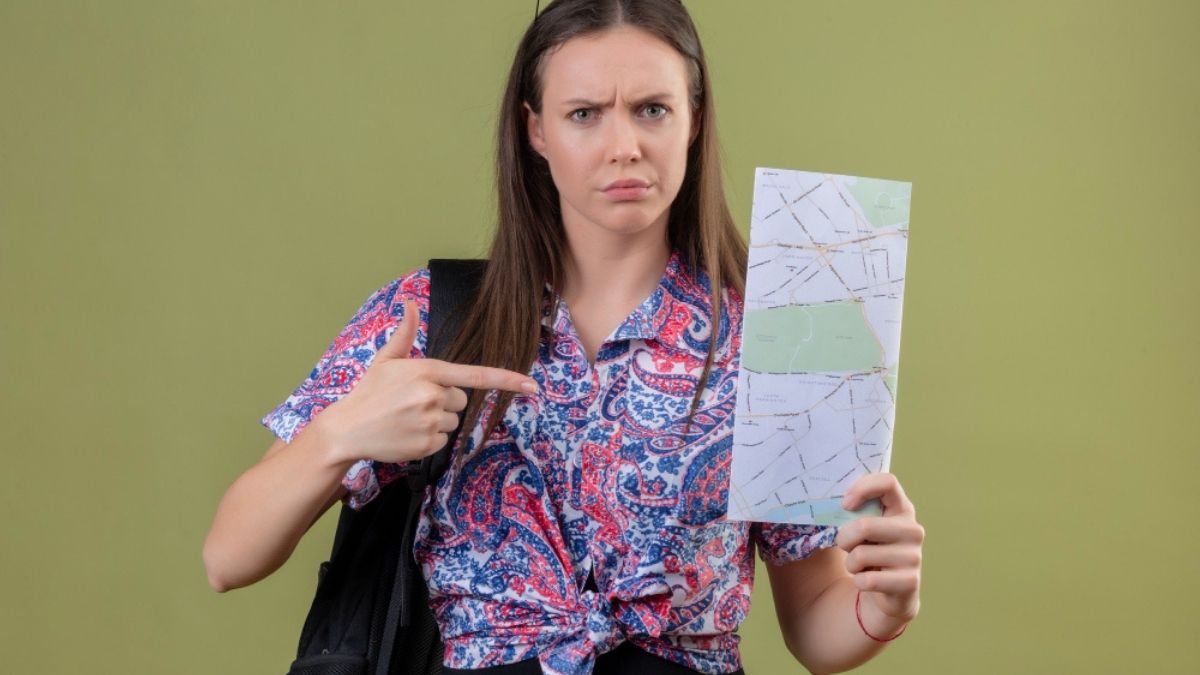Cursed-Memes.com travel, Travel content floods our social media feeds daily. Instagram stories showcase pristine beaches, Twitter threads document airport delays, and TikTok videos capture spontaneous adventures. But lurking beneath the polished vacation photos and wanderlust-inducing posts lies a darker, more chaotic corner of travel humor: cursed travel memes.
These aren’t your typical “airports be like” jokes or relatable flight delay content. Cursed travel memes occupy a strange digital space where vacation disasters, cultural misunderstandings, and travel anxiety merge into something simultaneously hilarious and deeply unsettling. They capture the moments when trips go spectacularly wrong, when cultural differences create bizarre situations, and when the gap between travel expectations and reality becomes a gaping chasm.
The cursed-memes.com travel phenomenon represents more than just internet humor. These memes tap into universal travel experiences while pushing boundaries of taste, comfort, and social awareness. They reflect our collective anxieties about venturing into unfamiliar territories, both literal and metaphorical. Understanding why these memes resonate requires examining not just their content, but the cultural forces that created the appetite for this particular brand of dark humor.
The Anatomy of Cursed-Memes.com travel Content
Cursed-Memes.com travel memes typically fall into several distinct categories, each with its own peculiar appeal. The most common involves dramatic overreactions to minor travel inconveniences, transformed into apocalyptic scenarios through creative image manipulation and text overlay.
Take the classic “turbulence” meme format, where mild airplane shaking becomes the premise for increasingly absurd passenger reactions. These images often feature distorted faces, impossible physics, or surreal scenarios that transform routine flight experiences into nightmare fuel. The humor derives from the extreme disconnect between cause and effect, but also from the recognition that travel anxiety can make minor incidents feel genuinely catastrophic.
Another popular category focuses on cultural misunderstandings taken to bizarre extremes. These memes often feature tourists encountering foreign customs, foods, or situations, with reactions that border on the surreal. While some of these can be genuinely funny, they also walk a fine line between cultural appreciation and othering.
Food-related cursed travel memes form their own subcategory, featuring dishes that challenge Western palates presented in increasingly chaotic contexts. Images of unusual local delicacies are paired with exaggerated reactions, creating content that’s simultaneously educational and deeply uncomfortable.
The visual elements of these memes often employ deliberate low-quality aesthetics, distorted images, and jarring color palettes that enhance their unsettling nature. This isn’t accidental—the “cursed” quality comes partly from the visual discomfort they create, making viewers simultaneously want to look away and share with friends.
The Viral Mechanics of Discomfort
What makes cursed travel memes so shareable? The psychology behind their viral spread reveals fascinating insights into how we process and cope with travel-related stress and cultural differences.
First, these memes operate on the principle of benign violation theory—they break social norms in ways that feel safe to laugh about. Travel situations often put us in vulnerable positions where normal social rules don’t apply, and cursed memes exaggerate this discomfort to comedic extremes. The humor comes from recognizing these feelings while maintaining safe distance from actual danger.
Cursed travel memes also function as social bonding tools. Sharing a particularly unsettling travel meme signals in-group membership among those who “get” the humor while simultaneously testing boundaries with those who might not. This creates a form of digital social currency where sharing the most cursed content demonstrates one’s comfort with discomfort.
The shareability factor increases because these memes often prompt strong reactions. Whether viewers find them hilarious or deeply disturbing, they’re likely to share them to gauge others’ reactions. This creates a feedback loop where the most extreme content spreads fastest, pushing creators to develop increasingly cursed variations.
Timing plays a crucial role in their viral potential. Cursed travel memes often spike in popularity during peak travel seasons, when collective travel anxiety runs high. They provide an outlet for processing shared fears about flight delays, lost luggage, cultural barriers, and vacation disasters.
The global nature of travel creates another layer of shareability. These memes can simultaneously reference universal travel experiences while highlighting culture-specific absurdities, allowing them to resonate across different audiences for different reasons.
The Dark Side of Dark Humor
Despite their popularity, cursed travel memes raise significant concerns about privilege, cultural sensitivity, and the ethics of finding humor in others’ misfortune or unfamiliarity.
Many of these memes implicitly assume a position of privilege—the ability to travel internationally, the cultural capital to understand references from multiple countries, and the economic security to treat travel disasters as merely inconvenient rather than financially devastating. When travel mishaps become meme fodder, there’s an underlying assumption that these experiences are temporary inconveniences rather than serious hardships.
Cultural insensitivity represents another major concern. Cursed travel memes often derive humor from presenting other cultures’ practices as strange, uncomfortable, or frightening. While cultural differences can genuinely surprise travelers, transforming these differences into “cursed” content can reinforce problematic stereotypes and othering behaviors.
The format itself can be problematic when it reduces complex cultural practices to punchlines. Traditional foods, religious customs, or social practices become props in jokes designed for Western audiences, stripping away context and meaning in favor of shock value.
Language barriers frequently become targets for cursed travel memes, with mistranslations and communication difficulties presented as inherently funny rather than natural parts of cross-cultural interaction. This can reinforce assumptions about linguistic superiority and cultural hierarchy.
There’s also the question of consent and dignity. Many cursed travel memes feature real people in vulnerable or embarrassing situations. While some subjects might have consented to their image being used, others become unwilling participants in viral content that reduces them to sources of entertainment.
The most problematic examples combine multiple issues—featuring people from marginalized communities in situations designed to provoke discomfort while reinforcing existing stereotypes about those communities or locations.
Anxiety in the Age of Instagram
Cursed travel memes don’t exist in a vacuum—they’re reactions to broader cultural trends around travel, social media, and the pressure to curate perfect experiences. Understanding their popularity requires examining the anxieties they both reflect and amplify.
Modern travel exists under unprecedented documentation pressure. Social media creates expectations that every trip should produce shareable content, that experiences should be optimized for visual appeal, and that travelers should present themselves as worldly, adventurous, and effortlessly sophisticated.
These pressures create fertile ground for cursed content because they highlight the gap between travel reality and travel performance. When pristine Instagram posts dominate travel conversation, cursed memes offer a form of counternarrative that acknowledges the chaos, discomfort, and genuine weirdness that travel often involves.
Climate anxiety adds another layer to contemporary travel stress. As awareness of aviation’s environmental impact grows, travel guilt becomes more common. Cursed travel memes can serve as a form of psychological defense mechanism, allowing people to express ambivalence about travel without directly confronting its ethical implications.
Economic inequality makes travel accessibility more visible and fraught. When international travel remains financially impossible for many, cursed travel memes can function as both escapism and criticism, allowing non-travelers to participate in travel culture while potentially mocking travelers’ privileges.
Post-pandemic travel anxiety has created new categories of travel-related stress that cursed memes both document and exaggerate. Health concerns, capacity restrictions, and changing regulations have transformed travel from routine to genuinely uncertain, providing rich material for anxious humor.
The performative aspects of travel culture also create pressure around authentic experience. Cursed travel memes can represent rebellion against this pressure, celebrating authentically uncomfortable or bizarre experiences over curated perfection.
From Postcards to Nightmare Fuel: Travel Humor Evolution
Travel humor has evolved dramatically with digital culture, and cursed travel memes represent the latest iteration in a long tradition of finding comedy in journey mishaps and cultural encounters.
Traditional Cursed-Memes.com travel humor focused on shared inconveniences—delayed flights, lost luggage, tourist traps, and language barriers. This humor was generally gentle, relying on recognition and mild frustration rather than shock or discomfort. Travel comedy typically punched up at systems and institutions rather than down at individuals or cultures.
Early internet travel humor maintained similar sensibilities but expanded reach and immediacy. Forums and early social media allowed travelers to share mishaps in real-time, creating communities around shared experiences. The humor remained largely sympathetic and inclusive.
The rise of meme culture introduced new aesthetics and sensibilities to travel humor. Visual jokes became more important than narrative ones, and brevity replaced detailed storytelling. This shift favored immediate impact over nuanced observation.
Cursed memes represent a further evolution, where the goal shifts from shared recognition to shared discomfort. The humor becomes more extreme, the visuals more jarring, and the content more boundary-pushing. This reflects broader internet culture trends toward increasingly extreme content designed to capture attention in crowded digital spaces.
The democratization of travel documentation through smartphones and social media has also changed what constitutes “travel content.” Everyone becomes a Cursed-Memes.com travel documentarian, creating more raw material for both sincere travel sharing and cursed meme creation.
Platform-specific humor has emerged as different social media sites develop distinct comedic cultures. Cursed travel memes adapted to each platform’s constraints and audience expectations, becoming more fragmented and specialized.
The speed of information sharing has accelerated the lifecycle of travel humor. What once might have been a story told among friends for years can now become a global meme within hours, but also disappear just as quickly.
FAQ: Understanding Cursed Travel Memes
What exactly makes a travel meme “cursed”?
Cursed travel memes typically combine unsettling visuals, uncomfortable scenarios, or anxiety-inducing situations with travel themes. They often feature distorted images, surreal scenarios, or extreme reactions to travel situations that create a sense of unease while still being recognizably humorous.
Are cursed travel memes harmful to tourism or cultural understanding?
This depends largely on specific content and context. While some cursed travel memes can reinforce stereotypes or present other cultures as inherently strange, others critique travel culture itself or highlight genuine travel anxieties. The impact varies based on how they’re created, shared, and interpreted.
Why do people share content that makes them uncomfortable?
Sharing cursed content serves multiple social functions: testing social boundaries, signaling in-group membership, prompting reactions from others, and processing uncomfortable feelings through humor. The discomfort itself becomes part of the entertainment value.
How do cursed travel memes differ from regular travel memes?
Regular Cursed-Memes.com travel memes typically focus on relatable, shared experiences with gentle humor. Cursed travel memes intentionally push boundaries, using unsettling visuals or extreme scenarios to create discomfort alongside humor. They’re designed to provoke stronger reactions than simple recognition or mild amusement.
Do cursed travel memes reflect real travel experiences?
While based on recognizable Cursed-Memes.com travel situations, cursed memes typically exaggerate these experiences to surreal extremes. They capture emotional truths about travel anxiety and cultural discomfort rather than documenting literal experiences.
The Future of Travel’s Dark Comedy
The trajectory of cursed travel memes reflects broader shifts in digital culture, travel accessibility, and global anxiety. As travel patterns change and new technologies emerge, this form of humor will likely evolve in predictable and surprising ways.
Climate change concerns will probably generate new categories of cursed travel content as extreme weather events disrupt trips more frequently. The growing awareness of overtourism might spawn memes about destroyed destinations and cultural appropriation. Economic inequality could create darker humor about travel privilege and accessibility.
Virtual and augmented reality technologies might create entirely new categories of cursed travel experiences, blending physical and digital travel in ways that generate fresh anxieties and comedic possibilities.
However, growing awareness of cultural sensitivity and digital ethics might also push cursed travel memes toward more self-aware humor that punches up rather than down. The most successful future iterations will likely find ways to maintain their edgy appeal while avoiding the most problematic aspects of the format.
The key to understanding cursed-memes.com travel content lies in recognizing it as both symptom and response to contemporary travel culture. These memes reflect genuine anxieties about cultural difference, travel privilege, and social media performance while providing outlets for processing these concerns through humor.
As Cursed-Memes.com travel continues evolving in response to environmental, economic, and social pressures, the dark comedy that emerges around it will serve as a fascinating mirror of our collective hopes and fears about venturing beyond our familiar boundaries. Whether that reflection helps us grow or simply entertains us while we avoid deeper questions remains to be seen.
Conclusion
Cursed-Memes.com travel, with all its complexities, continues to be an integral aspect of human experience, offering opportunities for growth, connection, and reflection. The humor and challenges surrounding it highlight not just our individual journeys but also the broader societal dynamics of privilege, culture, and environmental responsibility. By confronting these realities with both introspection and creativity, we can strive to make travel a more mindful and equitable pursuit for generations to come.






